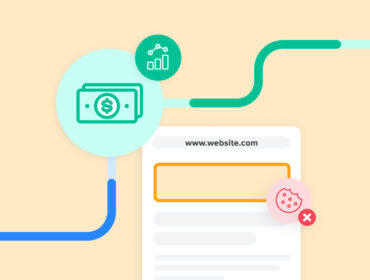How to use third-party cookies while preparing for their demise
Here’s the deal – everyone’s talking about preparing for the death of the third-party cookie.
But there’s one big problem they’re not addressing: how to actually move away from using third-party cookies … while still using third-party cookies.
After all, we’re still more than a year away from cookie-less Chrome browsers. Yet Safari and Firefox have already disabled these trackers. So publishers are caught in limbo, waiting for the entire landscape to shift.
As Garrett McGrath, VP of product management at Magnite, said in a recent Real Time Webinar, “One of the biggest problems we’re having is that third-party cookies are still here and you should still use them, but you need to prepare for when you can’t. And that’s a difficult transition.”
To help navigate this new world of data, we talked with McGrath and Jessica Muñoz, VP of product marketing at LiveIntent, about how to prepare for the cookie apocalypse.
Here’s their advice.

Rethink your approach to identity
There are many conversations to be had around the death of the third-party cookie. But, according to McGrath, they all have the same jumping-off point.
“Almost all of these conversations start with: these systems need to move to the end-user control or the publisher control,” he said. “They need to be not opaque. They need to be controllable, opt-outable, and consent-able – all of these things we need to do with the identity that we’ve not done a terrific job of to date.”

Clarify your value proposition
Now’s the time to home in on exactly what you can provide to audiences, and how you can sell that unique position to advertisers.
“You should be taking a look at how people are engaging with your content across multiple publishing brands,” said Muñoz. “If you can get your data in order to speak confidently to your partners about what makes you special and a valuable place to advertise, that’s going to help you [make this transition] and get what you want from these relationships.”

Address the four functions of third-party cookies
There are four key functions of third-party cookies: targeting, attribution, frequency caps, and opt-outs. While publishers are still figuring out how to manage opt-outs in a world devoid of third-party cookies, they have some answers for how to handle targeting.
As McGrath said, “I think that targeting, segment creation, and audience identification are probably going to move from buy-side, where they’ve been for a number of years, towards publishers and first-party signals.”

Find the right tools
The good news is that tools and technologies already exist to help publishers bridge the gap between using third-party cookies and building first-party data strategies.
“There are a number of solutions out there,” McGrath said. “A lot of them have to do with first-party signals and common identifiers, like the email address, that are not necessarily tied to something deterministic. [Publishers need to figure out] where to focus their efforts and explore their options in terms of technology partners.”
Reach out to [email protected] today to learn more about how LiveIntent can help with developing your first party data strategy.


